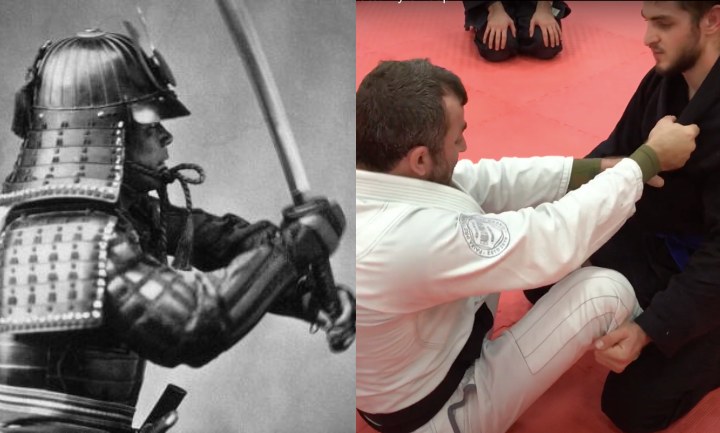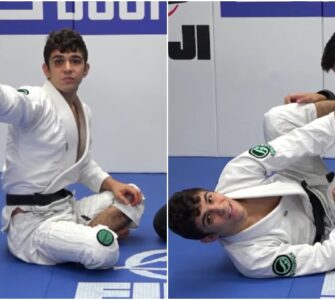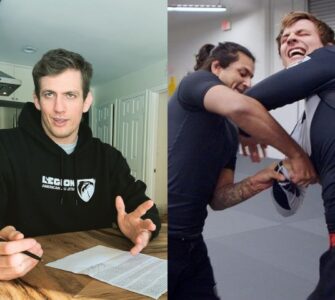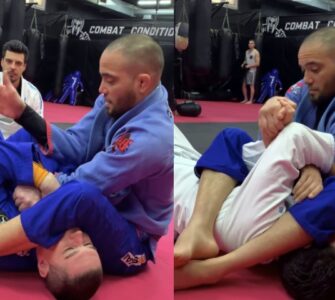If there were one most important thing to do at the beginning of a BJJ match, then it would be to establish some sort of control and dominance over your opponent, as soon as possible. And if there’s one thing that you should’ve learned in your Jiu Jitsu class up until now, it’s that the grips are everything.
Simply put, you need to establish a dominant grip before your opponent does! Because of that, you have to learn the Samurai Grip; one of the strongest and most versatile grips out there.
WHAT’S THAT?
The Samurai Grip is, essentially, a sturdy two-on-one grip that you establish on your opponent’s collar; a very powerful one because your opponents can’t break it that easily and particularly useful when in a Butterfly Guard position.
Pay attention, however, that you don’t grab the collar too high; you aren’t going for a choke, but for a grip. So, your Samurai Grip should be somewhere in-between the medium and high placement – you’ll figure the right height for yourself, just make sure not to grip any lower or higher than these two extremes.
Having figured out what the Samurai Grip is, let’s take a look at how you can use it to set up three different attacks from the Butterfly Guard.
SAMURAI GRIP TO OVERHOOK BUTTERFLY SWEEP
Starting from the Butterfly Guard and with the training partner gripping his pants, Professor Jimmy Johnstone, of Phoenix MMA, first moves in to establish the Samurai Grip.
Then, he scoots in with his backside underneath the training partner and pulls him to the side he has made the Samurai Grip at. If the training partner doesn’t let go of his pants, then all Professor Johnstone has to do is extend his legs up; sweeping the partner and mounting him.
However, if the partner does remove his grips and posts, then Professor Johnstone gets an overhook on the side he’s pulled him to.
From there, he lowers his legs and the training partner to the ground. He keeps his elbow tight to his body – in order to prevent the partner from moving his arm from the hip to an underhook. From there, he pushes the training partner back up and then comes in with his backside yet again. By grabbing the arm to block it and extending his legs, Professor rolls the training partner over to the other side and gets the sweep.
SAMURAI GRIP TO REVERSE ARMBAR
You can set up the Reverse Armbar with a pretty similar setup you’ve gotten the sweep previously.
Professor Johnstone establishes the Samurai Grip first and then slides in. Then, he pulls his training partner to the side he wants him to post his arm. When he does so, Professor Johnstone collects his arm over the elbow and pushes him away with the legs. At the finish of the movement, he simply squeezes on the elbow and gets the tap.
THE SAMURAI GRIP TRIANGLE CHOKE
Finally, there’s a great Triangle Choke you can get with the help of a Samurai Grip! Professor Gile, from Kimura BJJ Serbia, shows the so-called „Samurai Triangle“ setup.
After he has established the Samurai Grip, Professor Gile scoots in underneath his student. Then, he shoots his legs up – doing so by leading with his heels – across the student’s shoulders; with one leg coming around the student’s arm, on the side he has established the Samurai Grip at. From there, he locks a loose Triangle.
To get the tap, Professor Gile squeezes his knees in towards each other with the help of his hands.
Watch the Samurai Triangle Choke setup below:

















